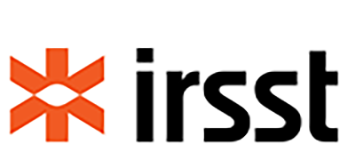Type de document
Études primaires
Année de publication
2024
Langue
Anglais
Titre de la revue
Biological Trace Element Research
Résumé
Welding activities are known to expose workers to metal fumes, but few studies have focused on assessing the internal exposure of apprentices in learning environments. This study aimed at determining internal doses of metals in apprentices performing gas metal arc welding (GMAW) during their training course. A total of 85 apprentice welders were assessed, and multi-elements were measured in urine, hair, fingernail, and toenail samples collected at the beginning of the program, and at the beginning and end of GMAW practical training. Concentrations of welding fumes and metals were also determined in personal respirable air samples. Serial measurements of metal concentrations in urine and hair, which reflect more recent exposure, showed an increase in arsenic (As), chromium (Cr), iron (Fe), and manganese (Mn) (and to a lesser extent nickel (Ni)) levels at the end of the GMAW process. Metal concentrations in fingernails and toenails showed a time-dependent increase in Fe, Mn, and Ni (and to a lesser extent cobalt (Co)) levels, reflecting cumulative exposure. Levels of Mn and Fe were high in personal air samples with respective median concentrations (95th percentiles) of 21 (300) and 230 (1900) µg/m3. Results show that even short-term exposure to welding fumes in a learning environment leads to a significant increase in absorbed metal doses, particularly for Fe and Mn. This follow-up study confirmed the interest and usefulness of measuring multi-elements in multiple matrices to assess internal exposure to welding fumes and its applicability to occupational or even population exposure to metals. © The Author(s), under exclusive licence to Springer Science+Business Media, LLC, part of Springer Nature 2024.
Mots-clés
Fumée de soudage, Welding fume, Soudage et coupage à l'arc, Arc welding and cutting, Évaluation de l'exposition, Exposure evaluation, Expérience, Experience, Étudiant, Student, Dosage dans les ongles, Determination in fingernails, Dosage dans l'urine, Determination in urine, Dosage dans les cheveux, Determination in hair, Échantillonnage dans l'air, Air sampling
Numéro de projet IRSST
2019–0003
Citation recommandée
Buitrago-Cortes, J., Sarazin, P., Dieme, D., Côté, J., Ouellet, C., El Majidi, N. et Bouchard, M. (2024). Follow-up biomonitoring study of metal exposure in apprentice welders in Montreal, Quebec, during gas metal arc welding (GMAW). Biological Trace Element Research. https://doi.org/10.1007/s12011-024-04354-7

